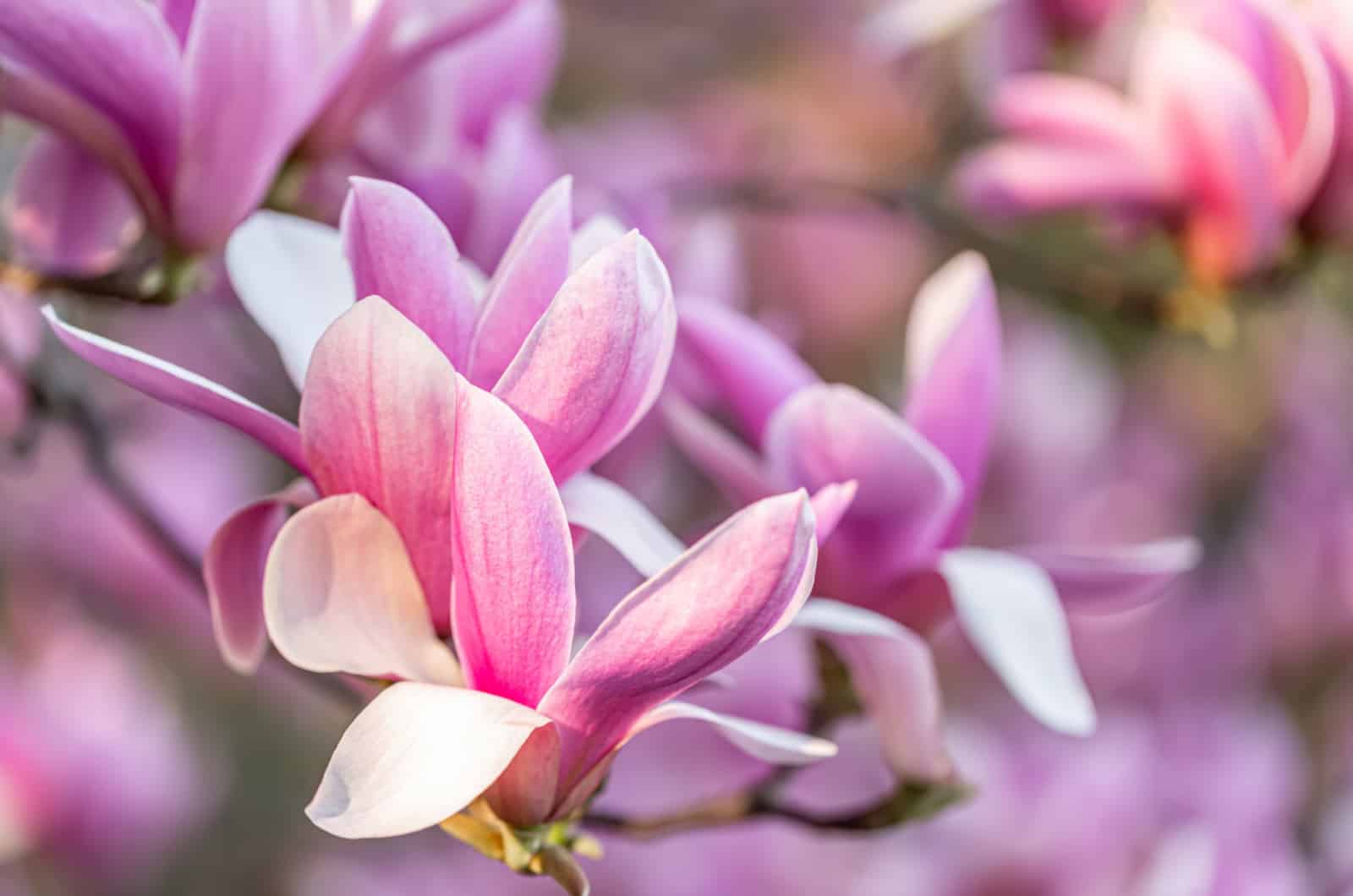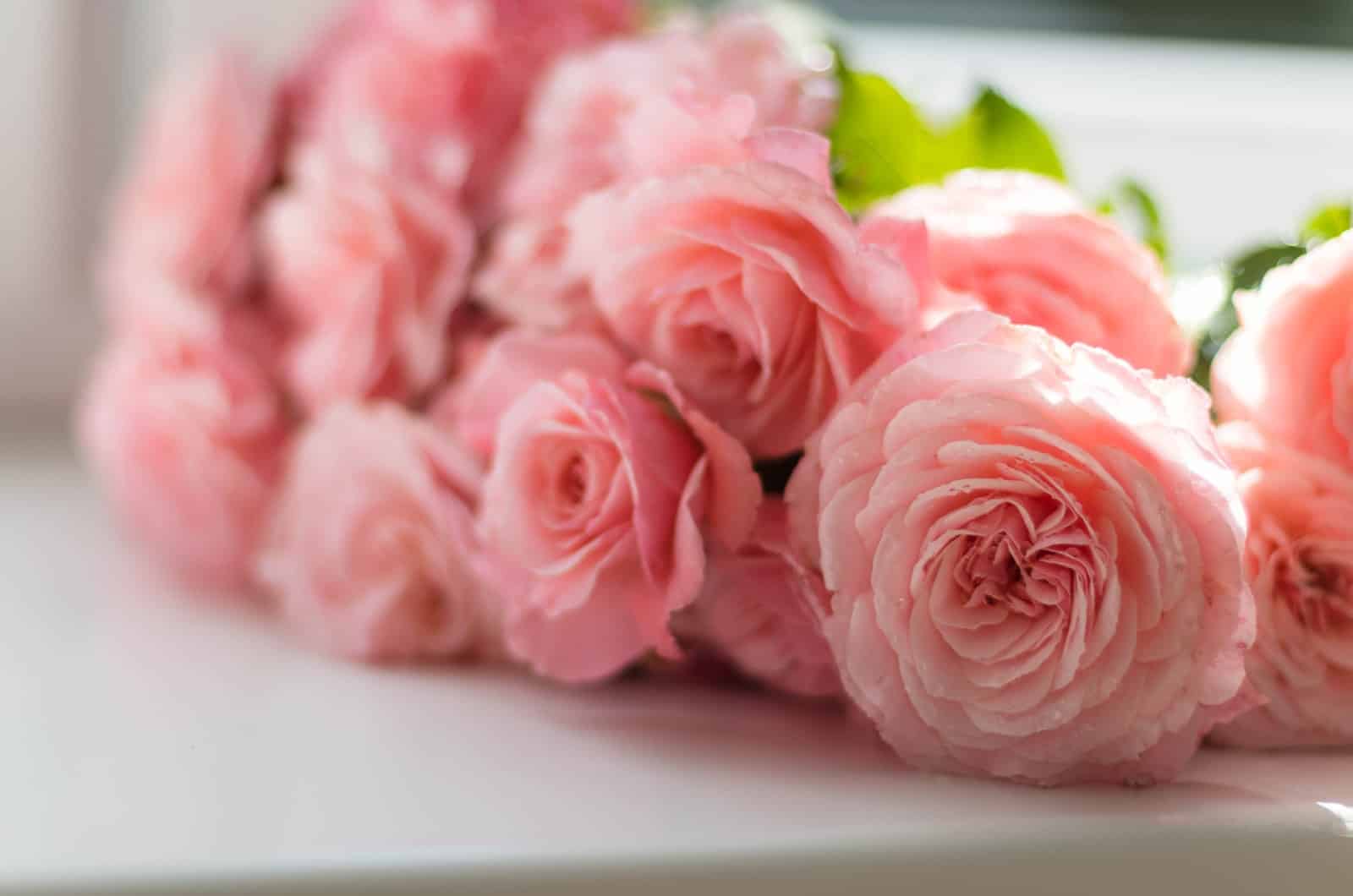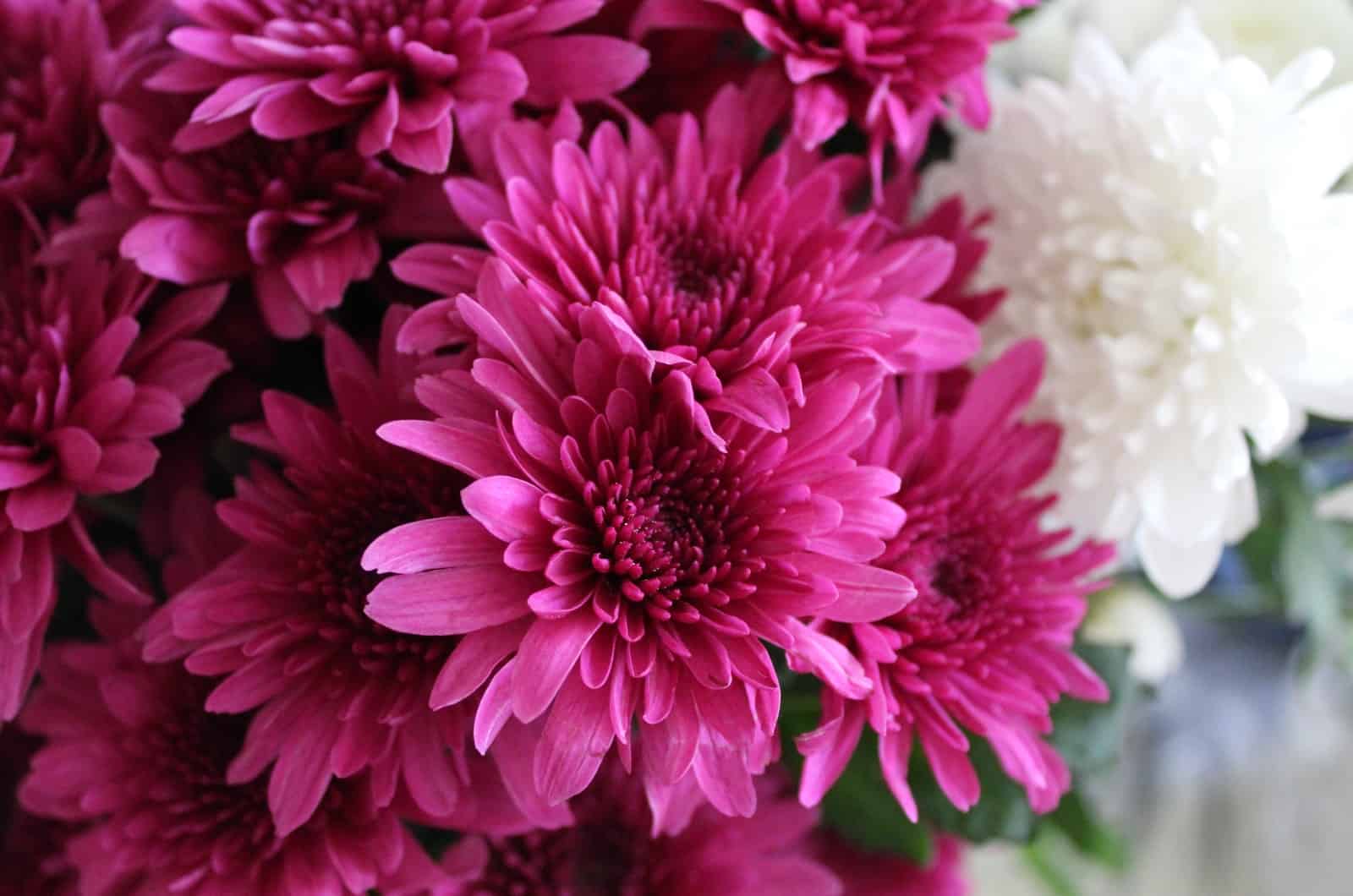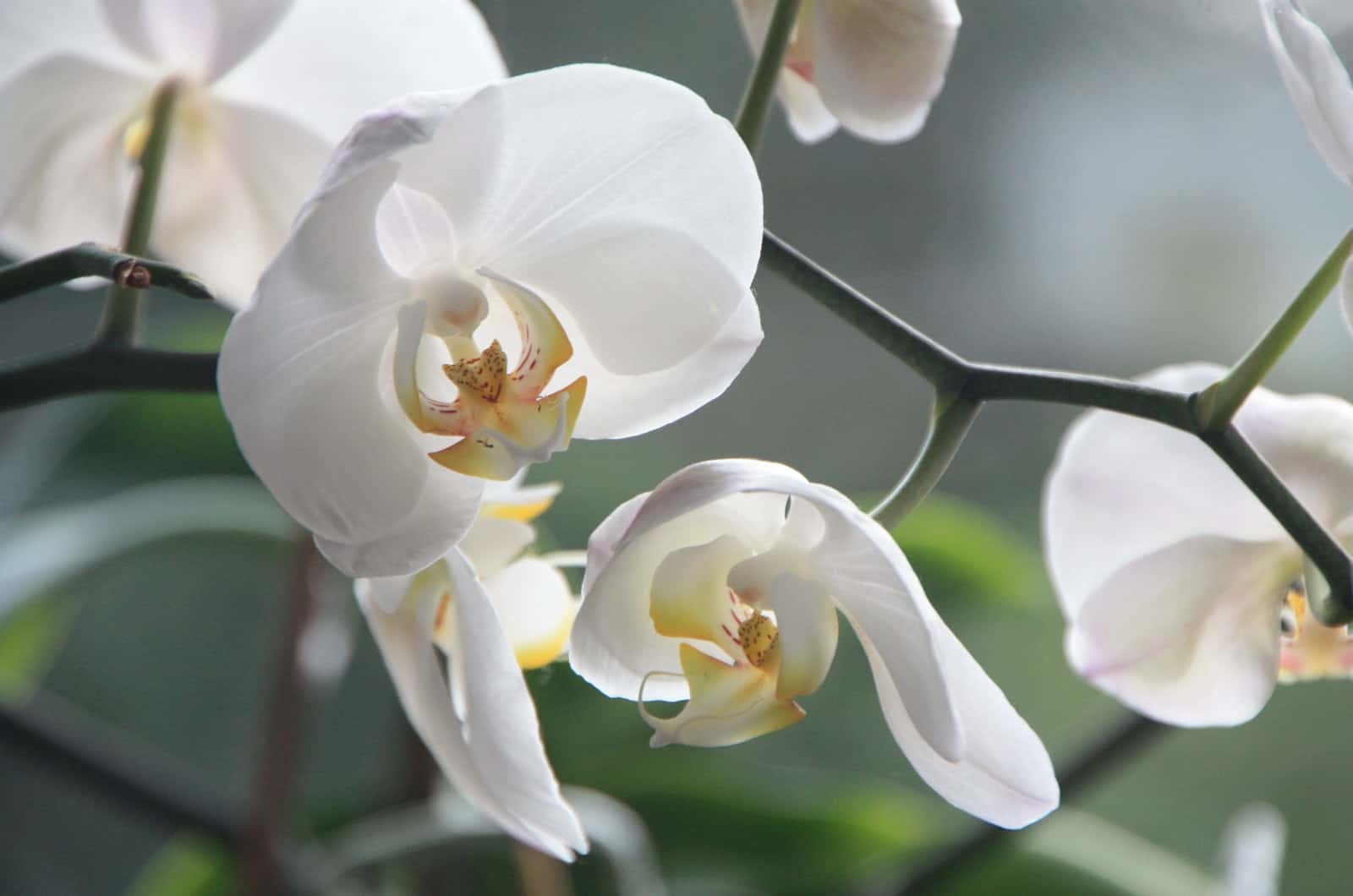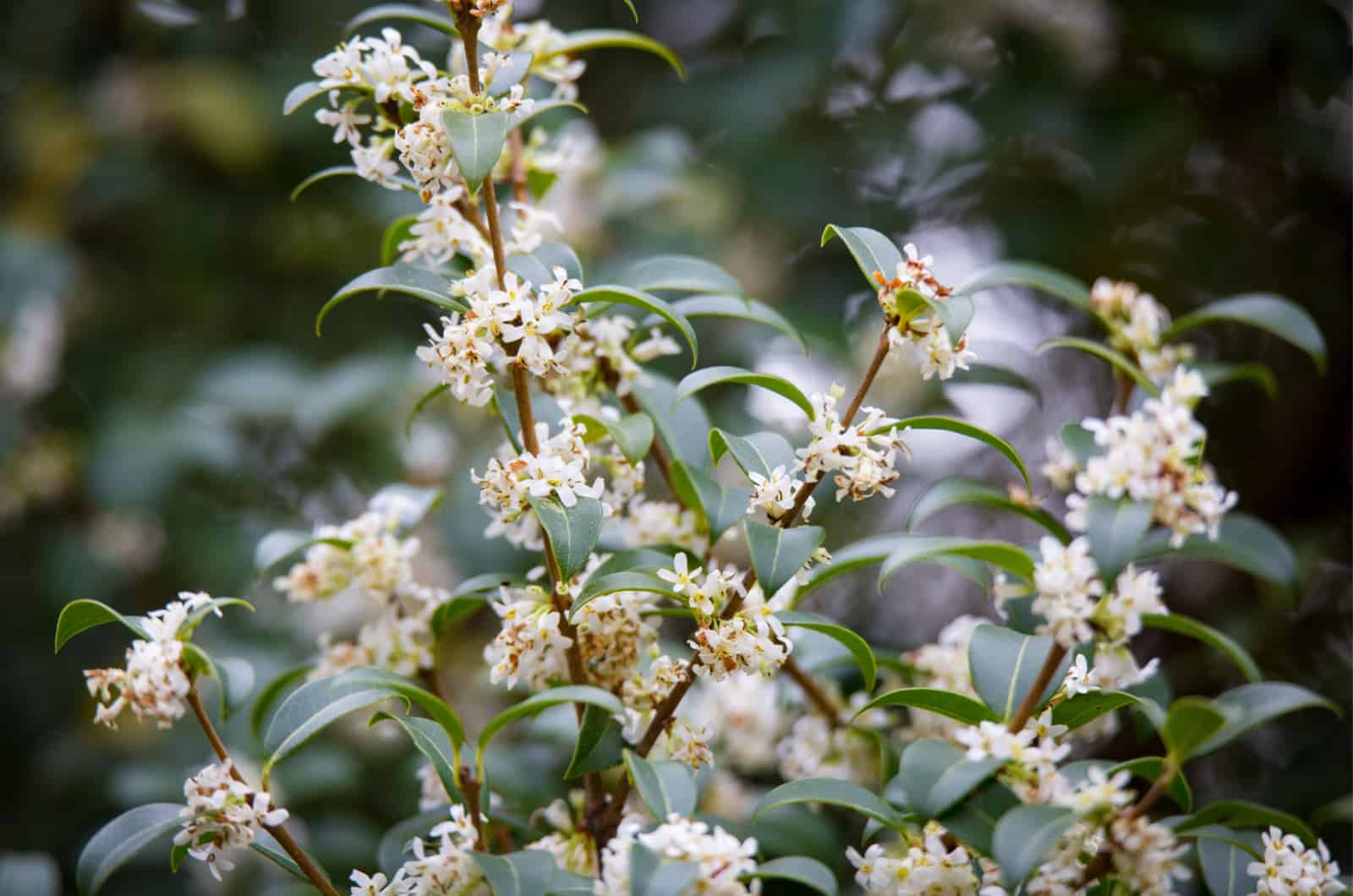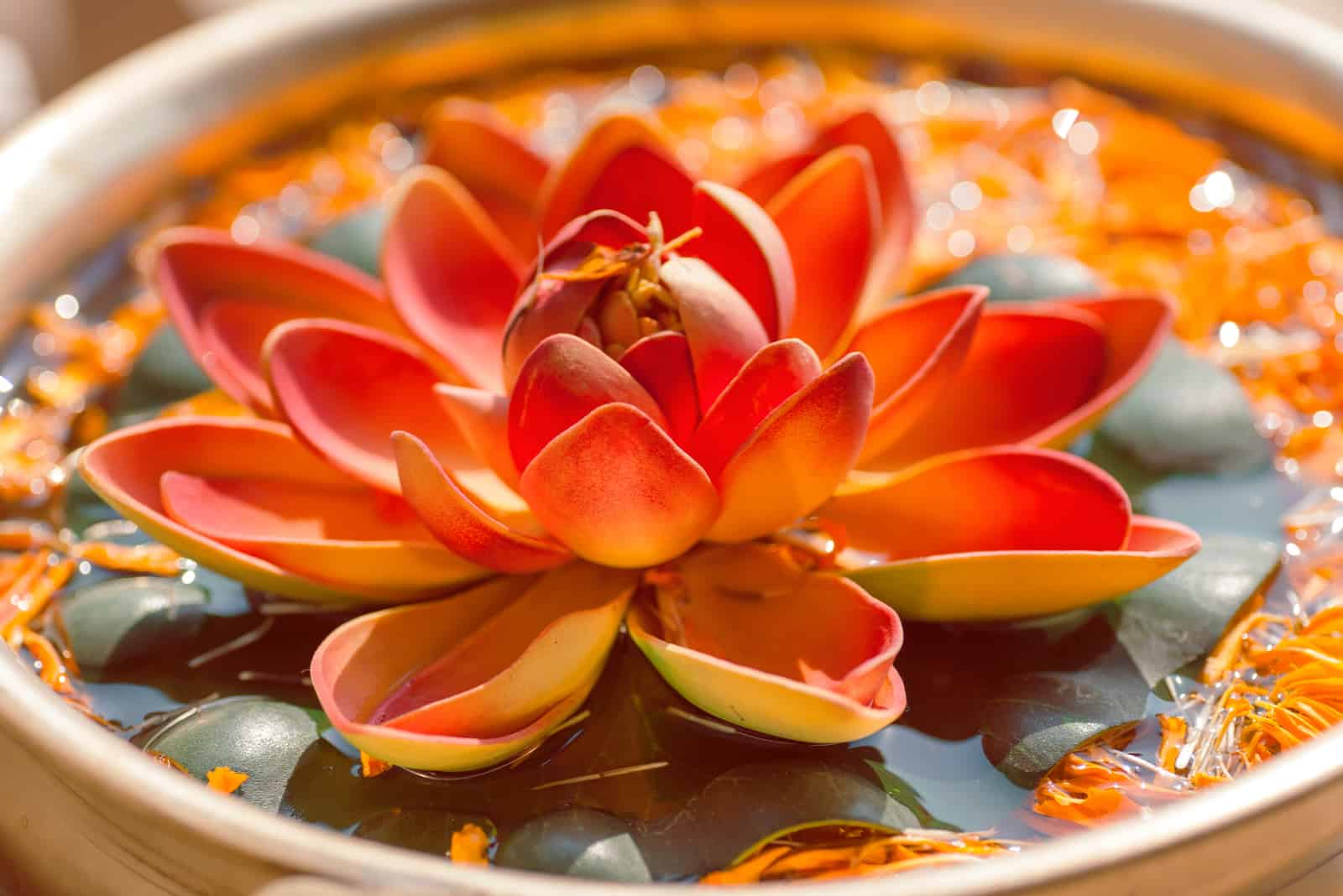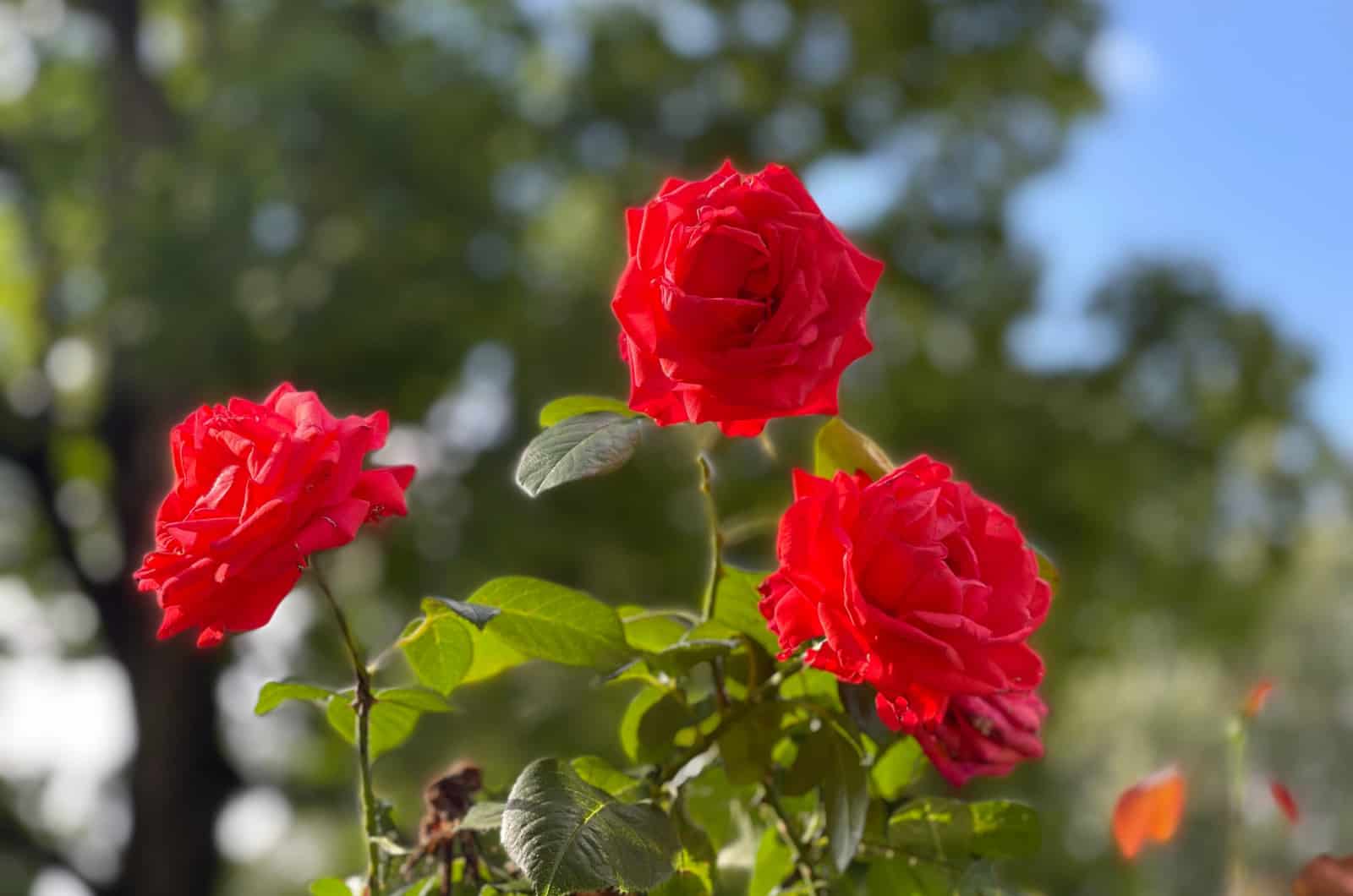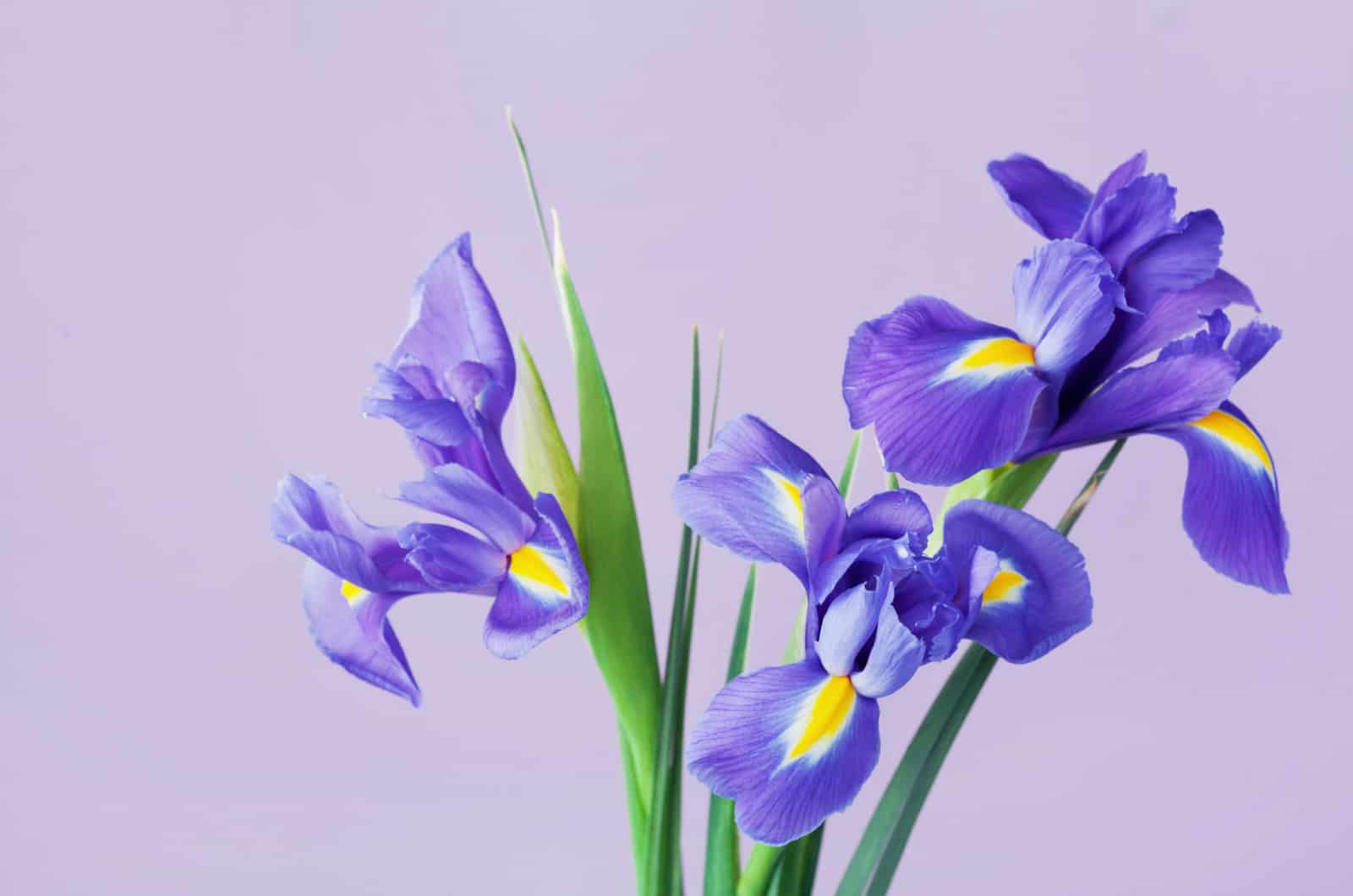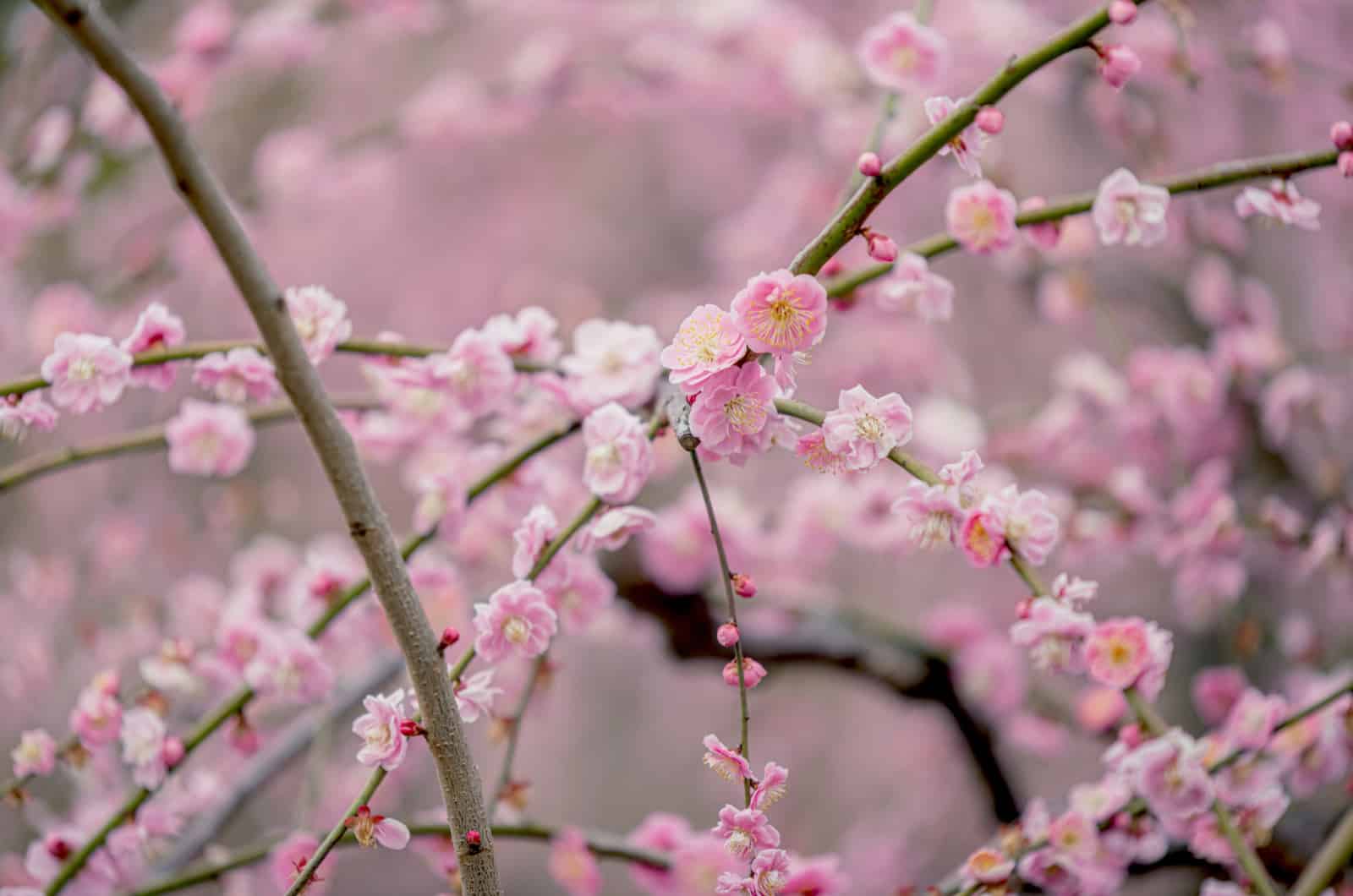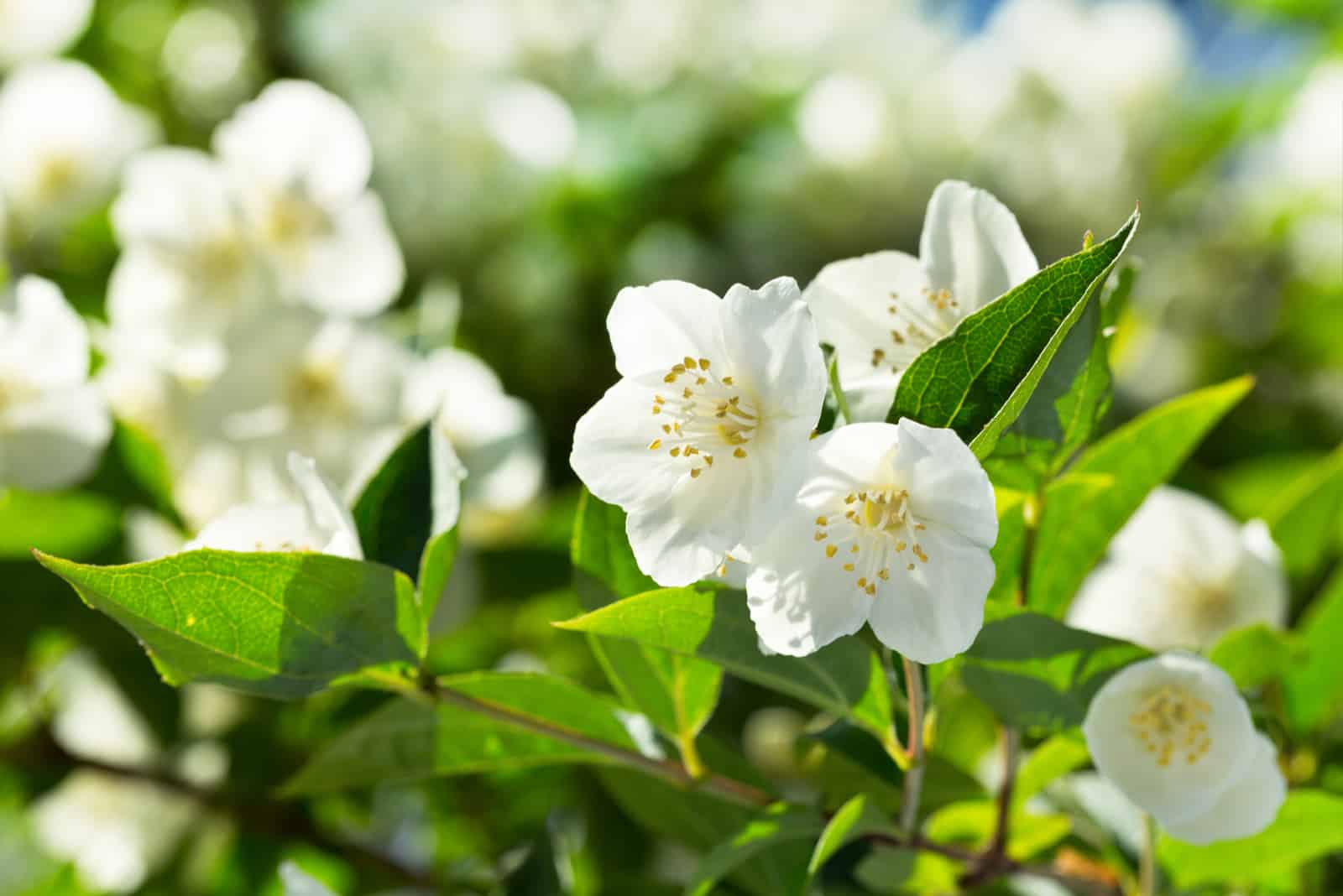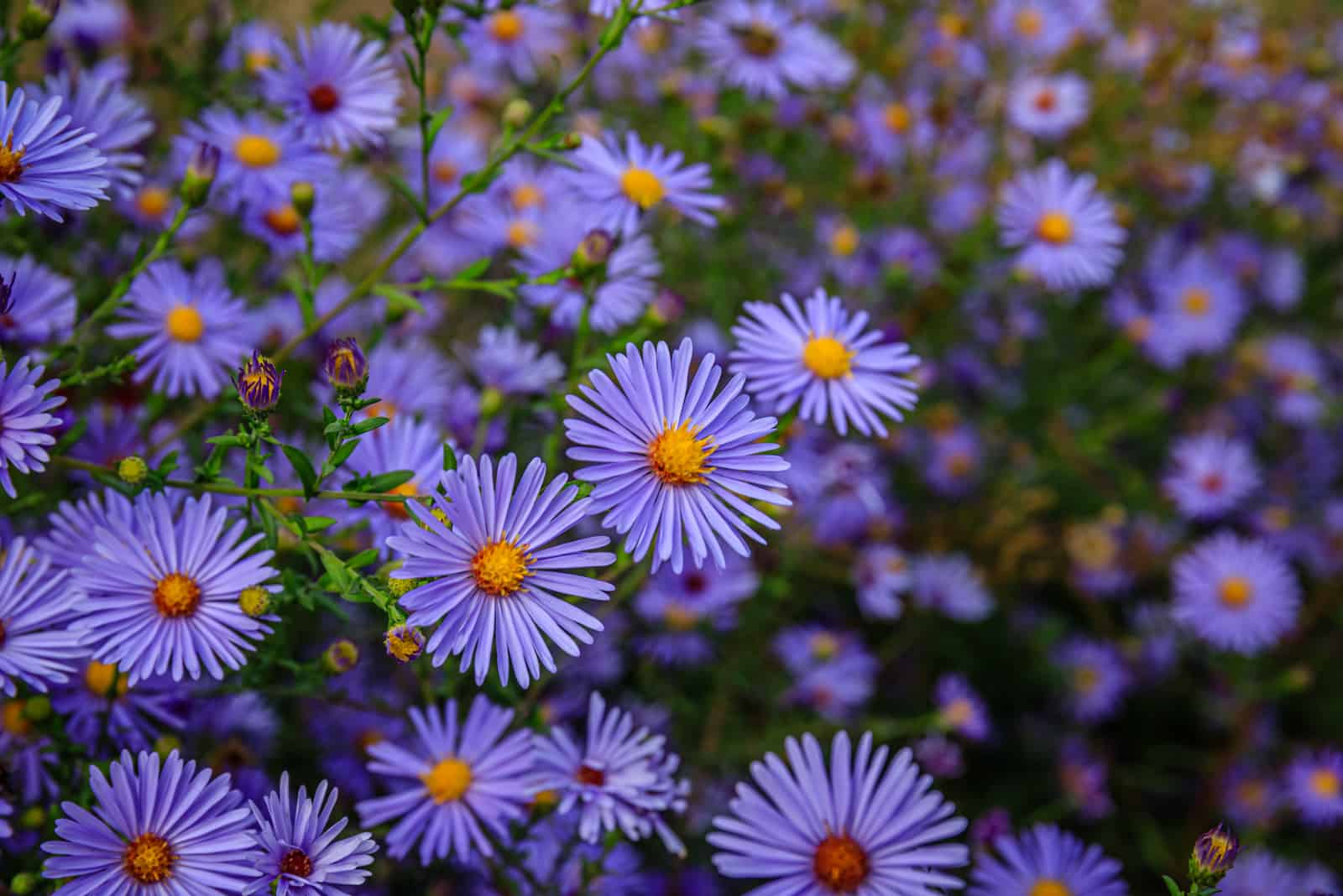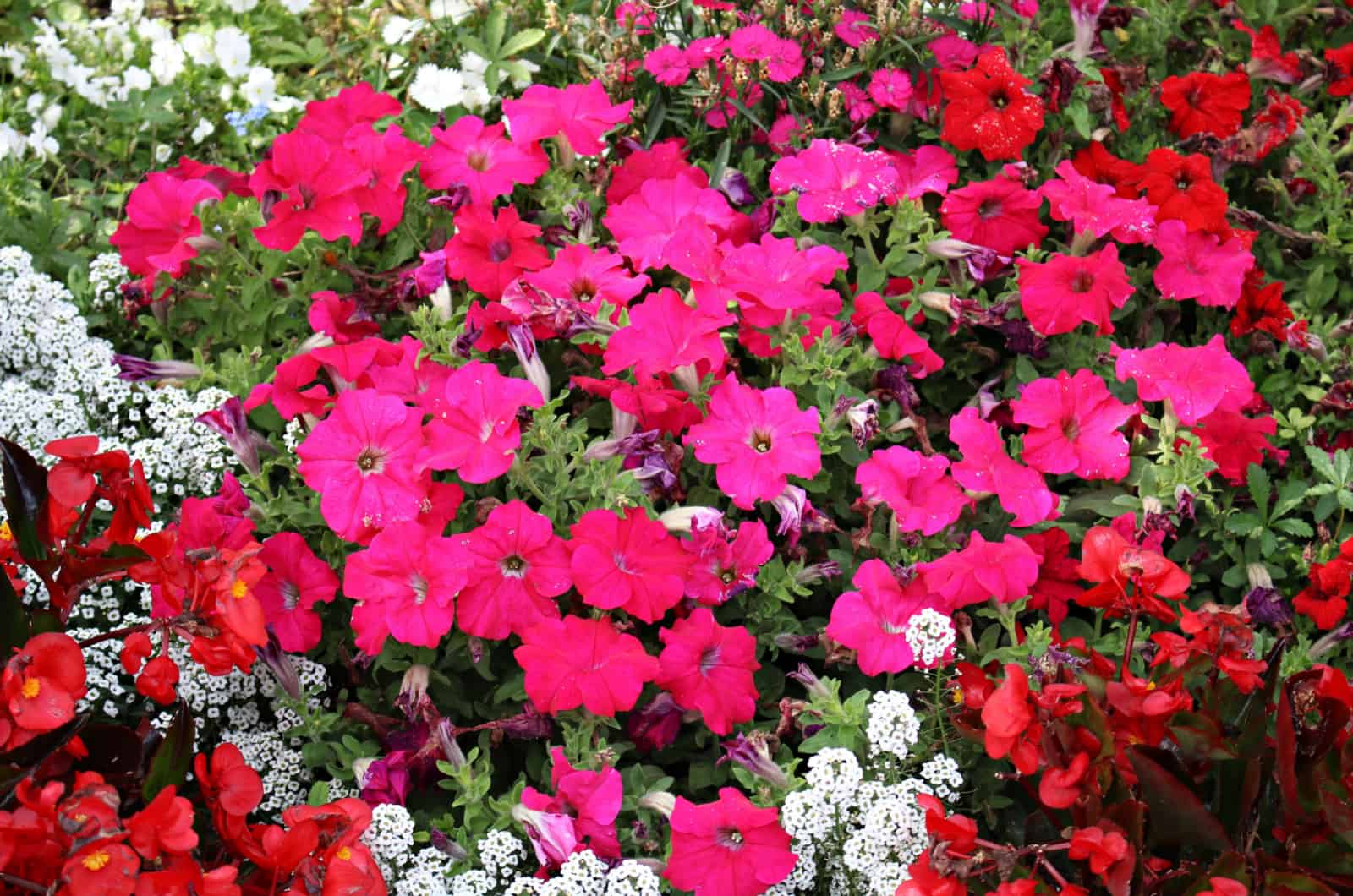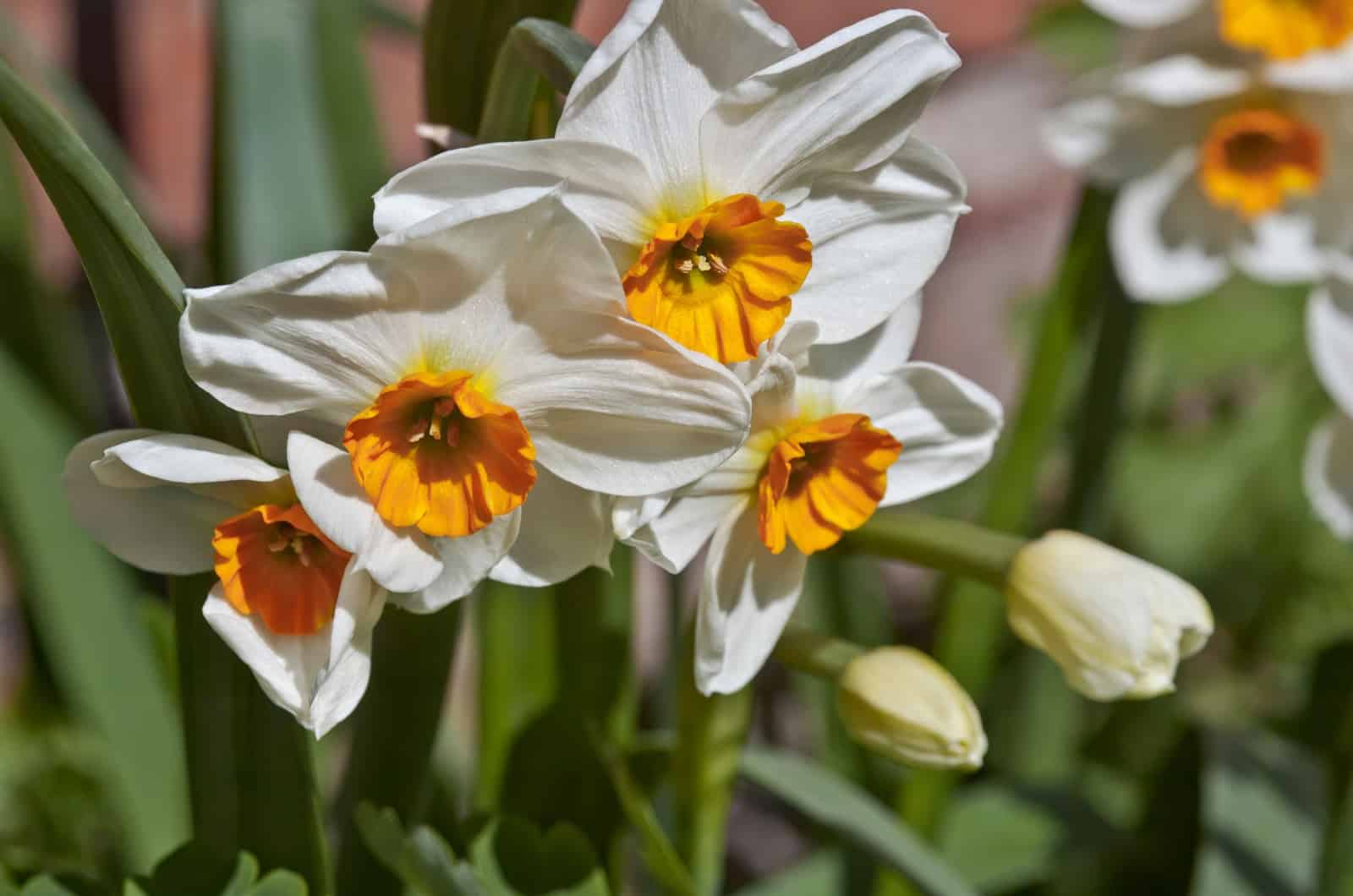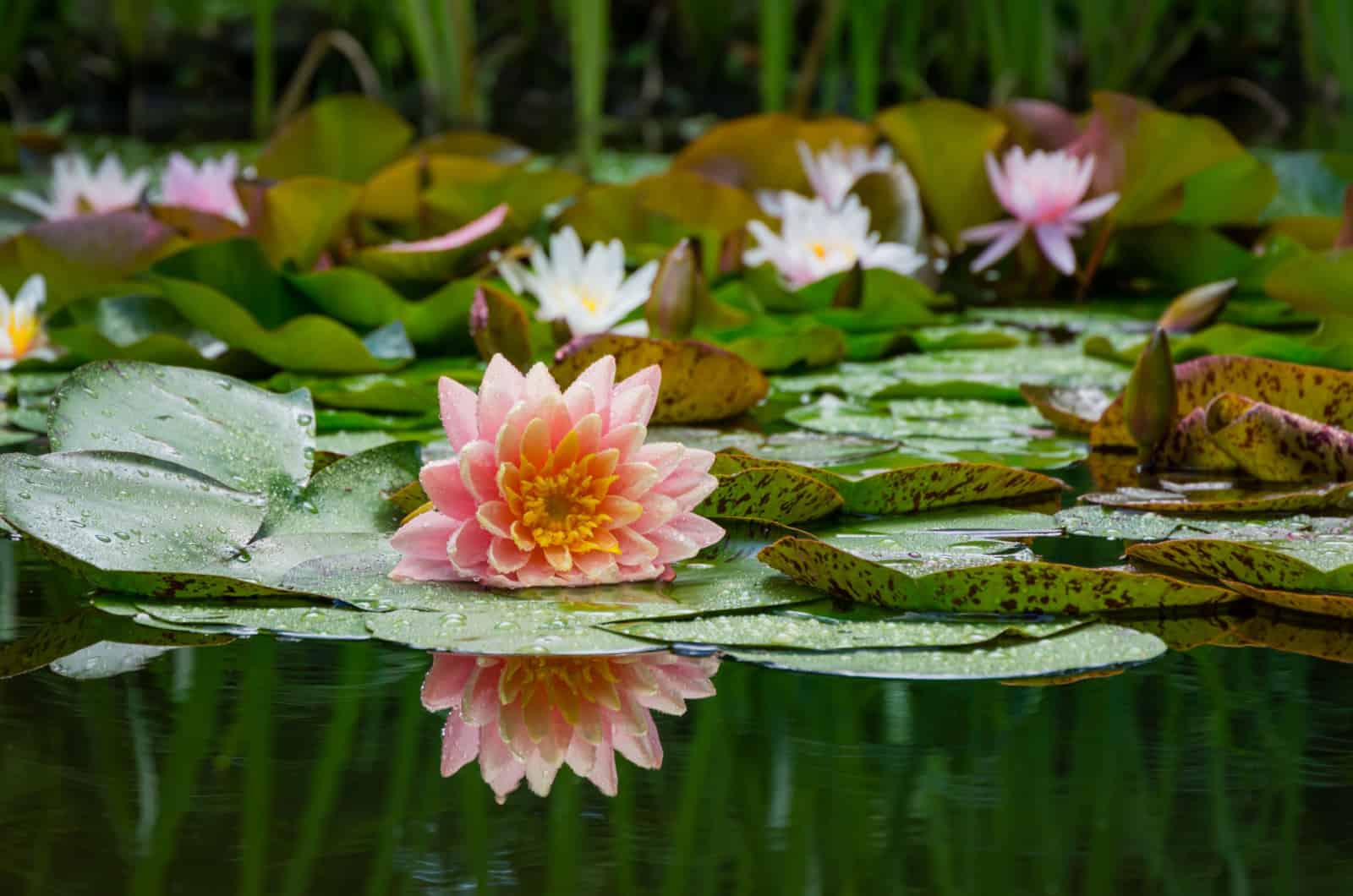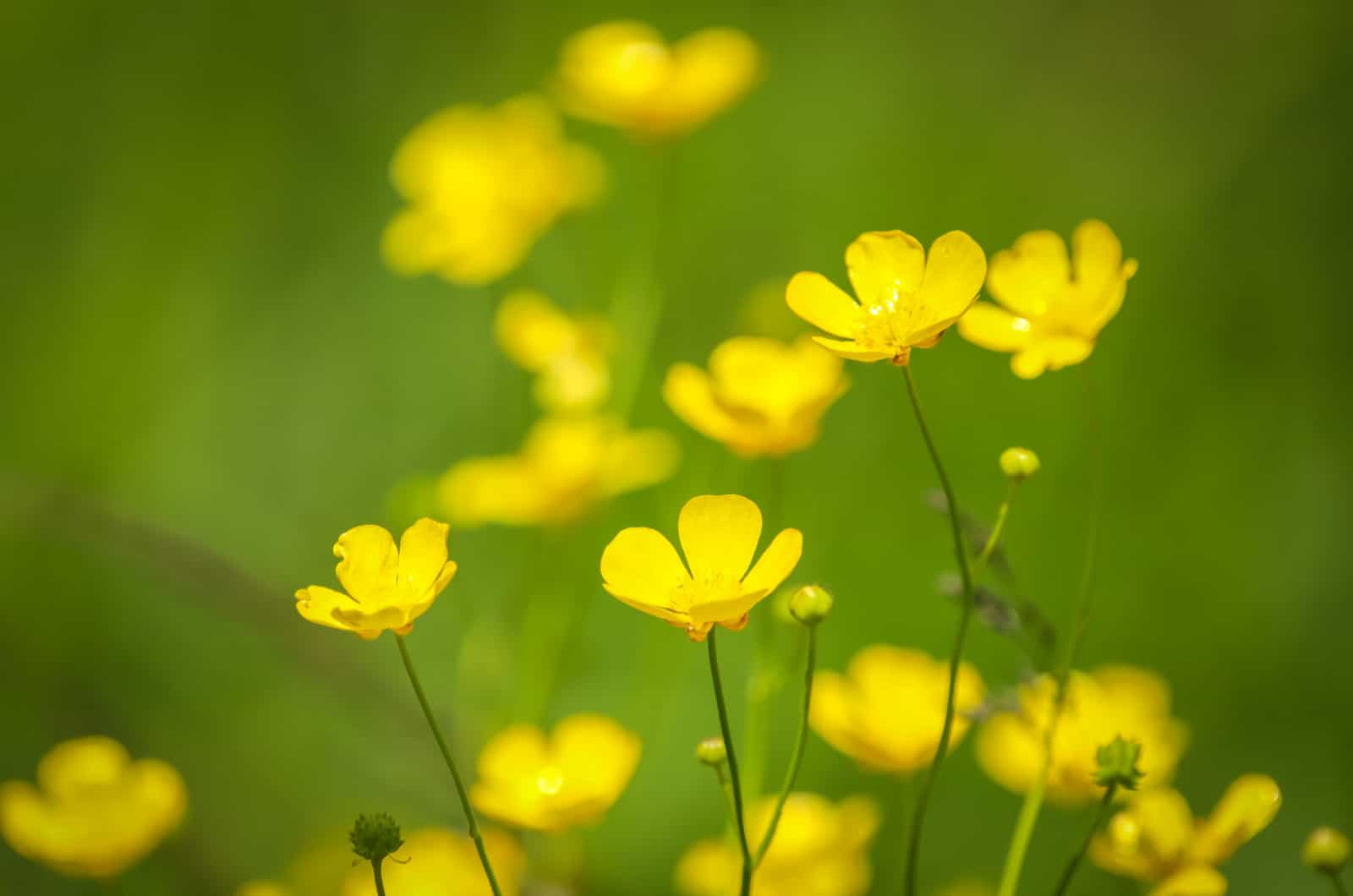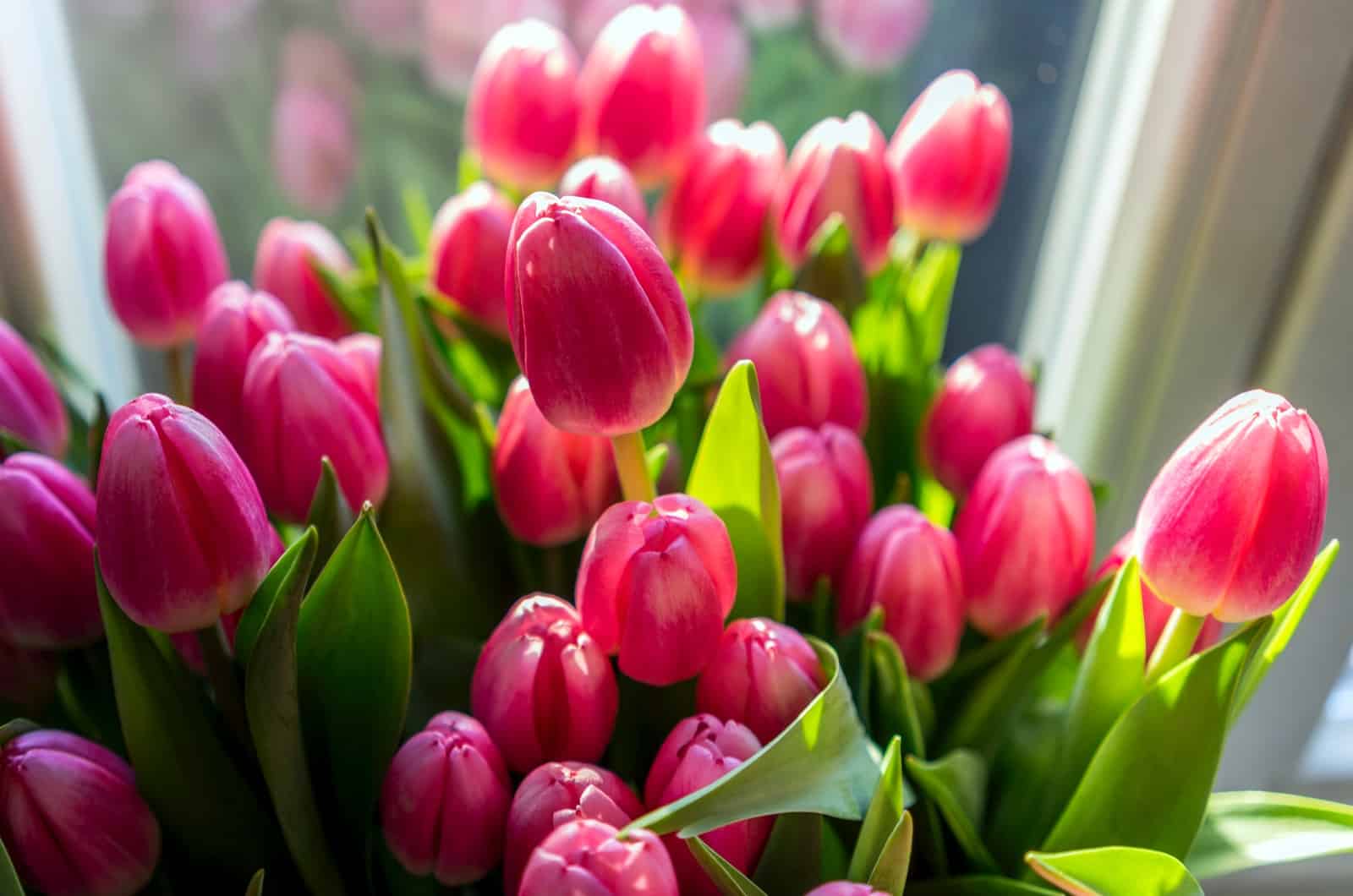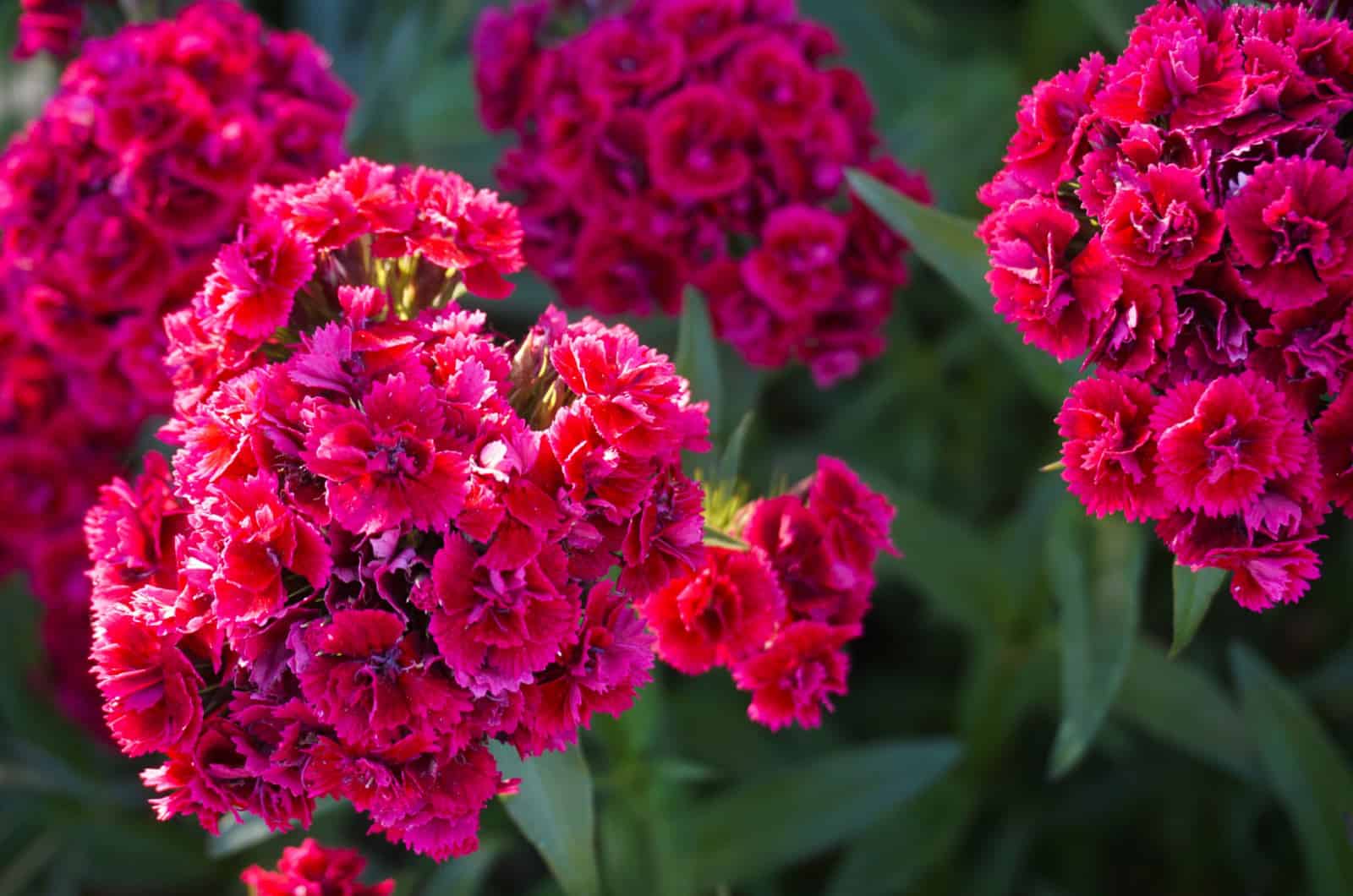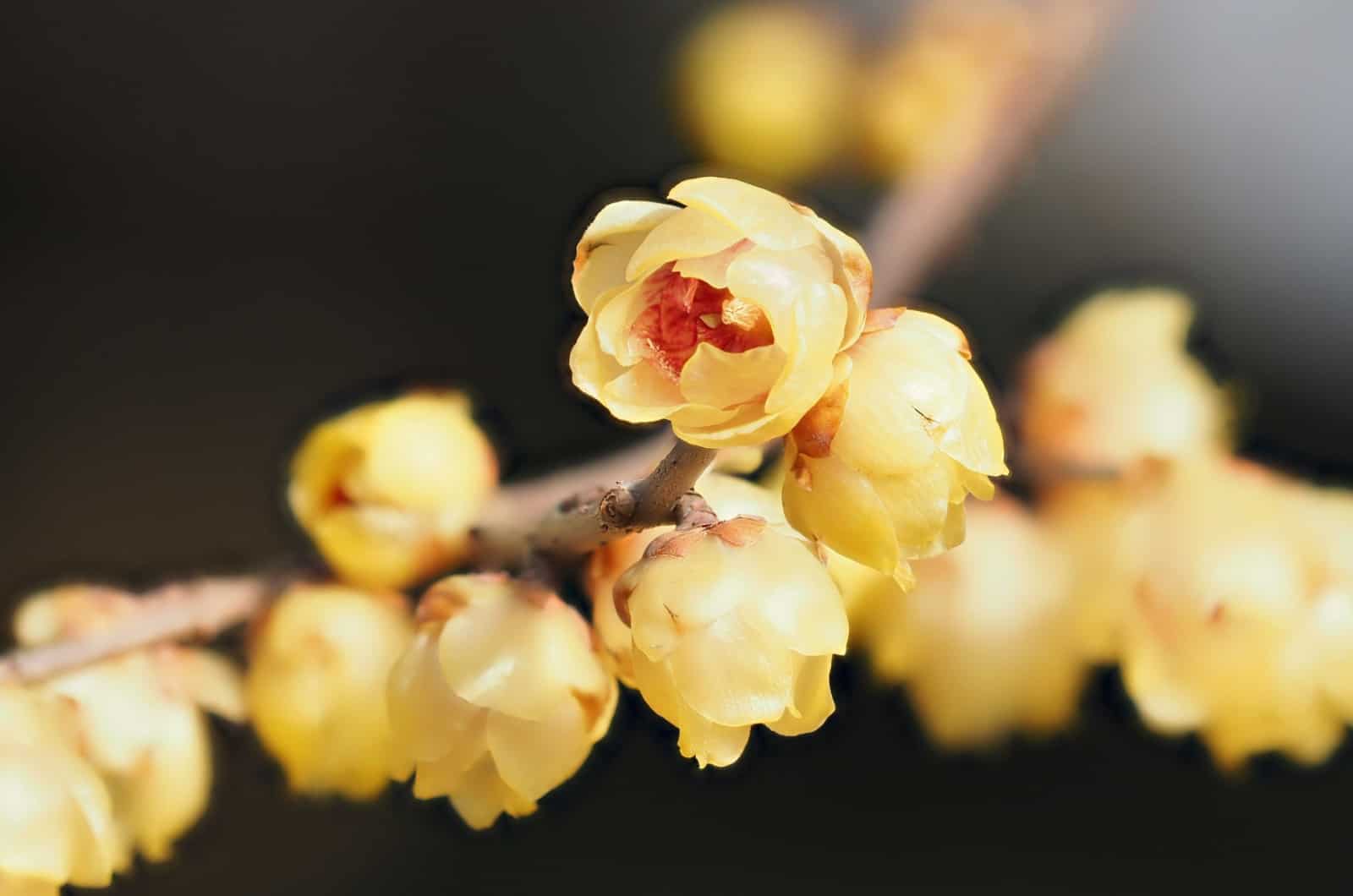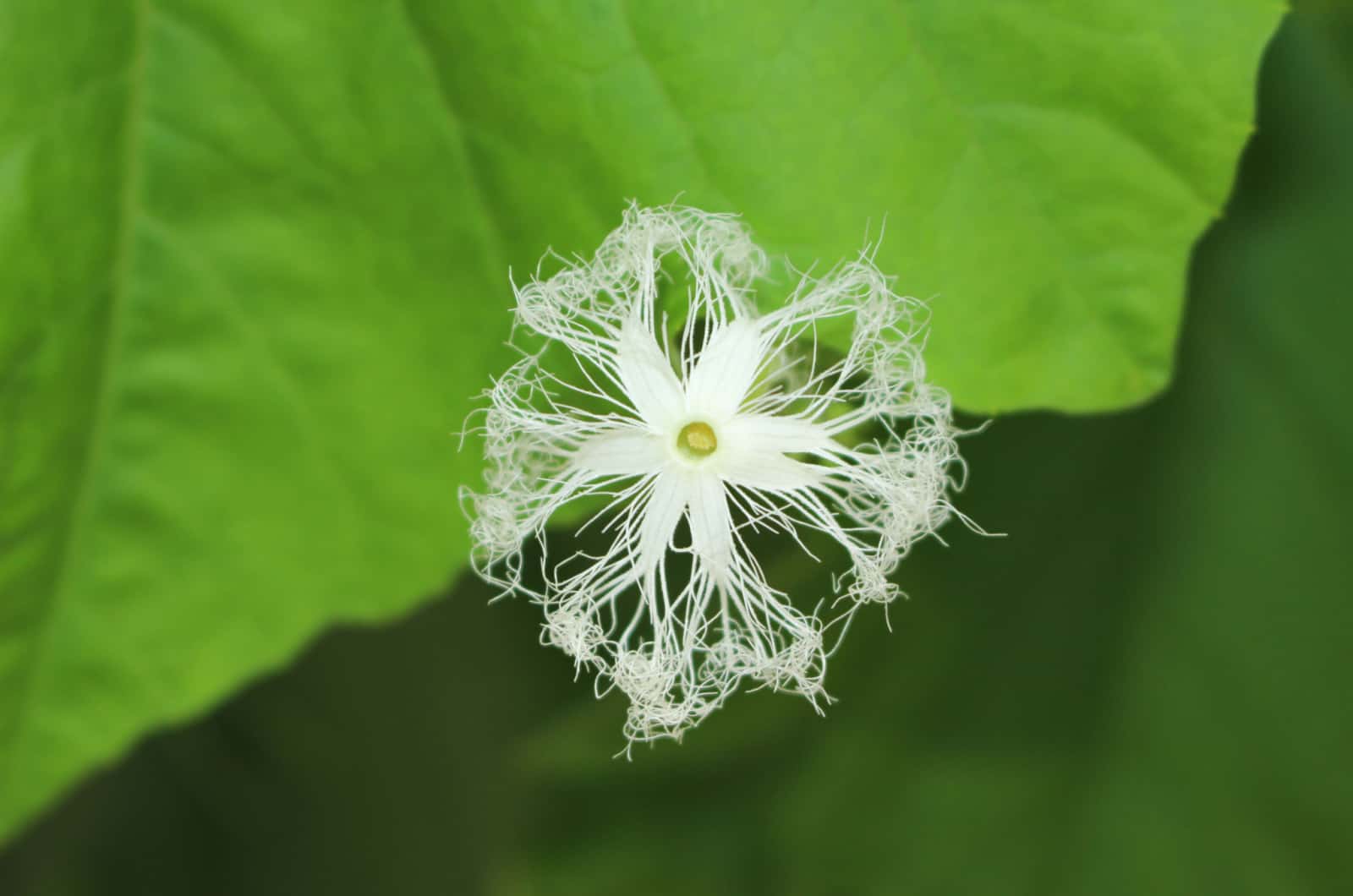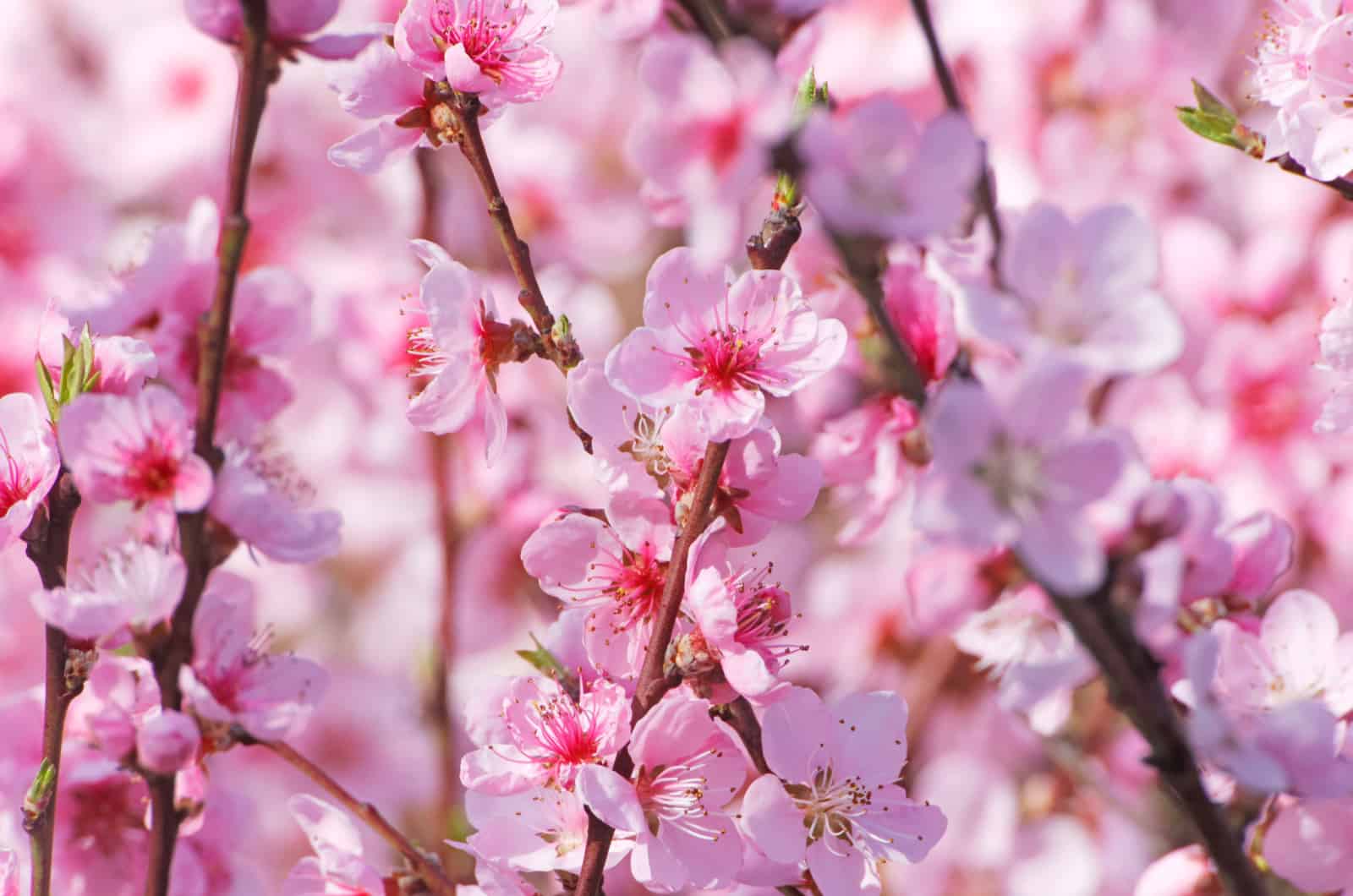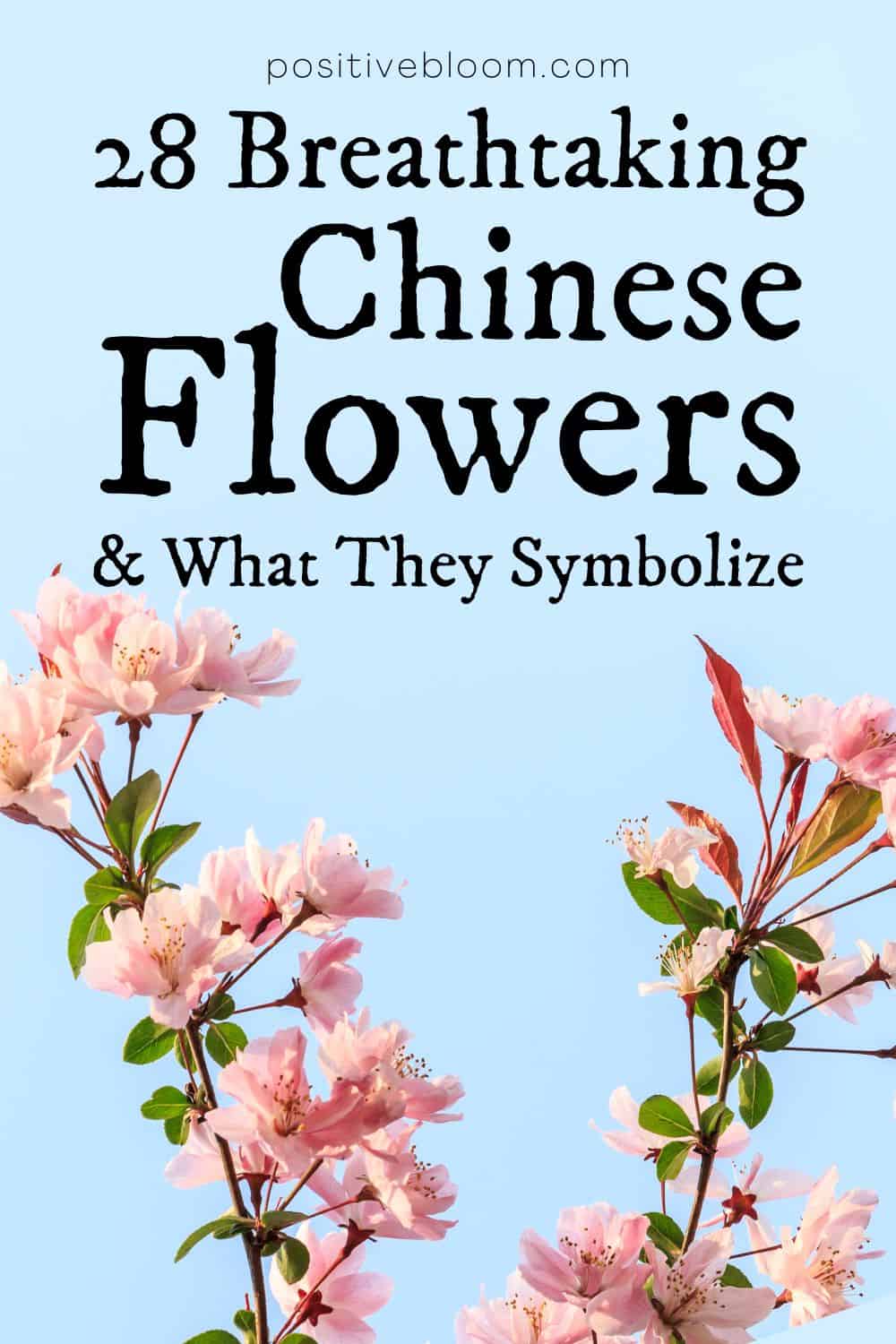When someone mentions China, what comes to your mind first? For some it may be its historical value as one of the Four Ancient Civilizations.
Others may think of delicious Chinese food. Then there are people interested in architecture and language.
Many also know China because of its Zodiac, Chinese New Year, and the Beijing Opera.
China is home to many magnificent flowers, and due to China’s rich culture, the flower meanings describe almost every aspect.
I made a list of 28 Chinese flowers that will leave you breathless! I’ll describe their botanical background, appearance, and what these flowers mean to Chinese people.
Let’s dive right in!
28 Captivating Chinese Flowers
In the Chinese language, the word for flower is 花 (huā). Flowers have been of great value to Chinese people since ancient times.
It seems that the tradition has continued, and the cultural significance of flowers remains the same.
The good news is that you can grow many of the flowers below both indoors or outdoors, depending on their requirements.
Here’s my list of 28 breathtaking Chinese flowers!
1. Peony
Peony flowers are of great importance to Chinese culture. Although it’s not official, many think of peonies as the national flowers of China.
First, let’s see some info about these flowers:
| Family: | Paeoniaceae |
| Scientific name: | Paeonia |
| Common names: | Peony |
| Size: | 3 feet long, 3 feet wide |
| Color: | Pink, red, white |
| Toxicity: | Toxic |
This gorgeous flower is also known as the King Of Flowers, and it represents wealth, prosperity, and honor.
All people of the Tang Dynasty, including the emperors, adored peonies. According to folklore, Empress Wu Zetian is credited for ordering that all the flowers that were cultivated in their garden must bloom in the midst of winter.
All the plants in the royal garden grew in fear of her influence, with the exception of the peony. The Empress was furious and exiled the peonies to Luoyang. The flowers did, however, flourish magnificently after their relocation.
The Empress gave the order that all these flowers must burn. One year after the terrible fire, the peonies once again flowered in splendor. Humans 0, nature 1!
Nowadays, if you happen to visit the beautiful Chinese city of Luoyang, you can see the Peony Festival.
2. Chrysanthemum
Another fascinating Chinese flower is the chrysanthemum.
Let’s start with some basic info about these flowers:
| Family: | Asteraceae |
| Scientific name: | Chrysanthemum |
| Common names: | Mums or chrysanths |
| Size: | 1-3 feet tall, 1-3 feet wide |
| Color: | Yellow, red, white, purple, orange, green |
| Toxicity: | Toxic |
The Double Ninth Festival is a Chinese holiday, and if you happen to visit China on the ninth day of the ninth month (lunar calendar), you’ll be offered a chrysanthemum vine (and you should drink it).
You can also try chrysanthemum tea, which tastes excellent and is healthy as well.
This flower is commonly used in Chinese medicine, as it’s thought to cure headaches.
What’s also special about this flower is that it flowers in fall, whereas most other flowers wither during this time. So, scholars view this flower as a symbol of strong vigor and tenacity as it blossoms magnificently in the face of cold and harsh conditions without trying to outcompete other flowers.
This is the reason you’ll find many literary works inspired by these unique flowers. They symbolize vitality, long life, and nobility and are one of the Four Noble plants in Chinese art.
3. Orchid
Orchids are definitely the most popular flowers, and parts of many outstanding plant collections. In Chinese art, they are considered one of the Four Noble plants.
Let’s find out some basic info about these flowers:
| Family: | Orchidaceae |
| Scientific name: | Orchidaceae |
| Common names: | Moth orchid, orchid, cane orchid |
| Size: | 1-3 feet tall, 6-12 inches wide |
| Color: | White, pink, orange, purple, yellow |
| Toxicity: | Non-toxic |
Cymbidium orchids are profoundly ingrained in Chinese culture, and are more than just aesthetic plants in this country.
Chinese orchids are viewed as having a feminine attractiveness due to their exquisite shape and gentle scent.
In the past, Orchid (Lan) was a common girl’s name. A woman with a pure spirit and soul is described as having a cymbidium orchid heart. Women utilize an elegant gesture called the Orchid-shaped finger to imitate the shape of an orchid.
The stunning orchid flowers wave gently in the breeze and have a delicate yet all-pervasive scent.
Chinese scholars have had a special fondness for orchids, which are thought to symbolize the qualities of a perfect gentleman, such as honor, nobility, modesty, and self-control.
In general, these flowers symbolize beauty, good fortune, and love.
4. Azalea (Rhododendrons)
Azaleas are among the most beautiful flowers in the world, and are also very appreciated in Chinese culture.
Here’s some basic info about Azaleas:
| Family: | Ericaceae |
| Scientific name: | Rhododendron, spp |
| Common names: | Azalea |
| Size: | 1-4 feet tall, 1-4 feet wide |
| Color: | Pink, white, orange, yellow, red |
| Toxicity: | Toxic |
These lovely flowers were raised by Buddhist monks in order to be worshiped by the kings. At that time, azaleas were emerging as a symbol of the royals’ devotion and yearning for the people and the country.
There’s another interesting story about these flowers; according to a Chinese legend, a long-gone king was murdered and transformed into a cuckoo.
The cuckoo sang so furiously over the horrible death of the king that blood spurted from his bill. The folklore holds that the cuckoo painted the petals red because April is the month when the cuckoo calls, and the vivid red azalea blooms.
However, nowadays these flowers symbolize womanhood, good fortune, and passion.
5. Camellia
If you have read Harper Lee’s classic novel, To Kill A Mockingbird, you know that camellias represent patience and understanding in the book.
This amazing flower is also a part of traditional Chinese culture. Let’s see some basic info about it:
| Family: | Theaceae |
| Scientific name: | Camellia spp. |
| Common names: | Camellia |
| Size: | 2-12 feet tall, 2-10 feet wide (depending on the species) |
| Color: | Pink, yellow, red, lavender, white |
| Toxicity: | Non-toxic |
The camellia symbolizes the uniting of two lovers in Chinese culture. The flower’s beautifully layered petals stand for the woman, while the calyx stands for the man who stands guard over her. These two remain together even after death.
A Camellia with white flowers is a symbol of purity, pink camellias represent longing, and red camellias stand for passion, devotion, and desire.
Camellia Sinensis is commonly used for teas as its leaves and petals contain a high concentration of caffeine.
6. Osmanthus
The beautiful and popular osmanthus flower is cultivated in all regions of China.
Let’s find out some basic info first:
| Family: | Oleaceae |
| Scientific name: | Osmanthus fragrans |
| Common names: | Fragrant olive, sweet olive, or sweet tea |
| Size: | 10 feet tall, 6-8 feet wide |
| Color: | Light yellow, orange-yellow, yellow, and white |
| Toxicity: | Non-toxic |
This flower is considered to be one of 10 traditional Chinese flowers. Interestingly, only rich and prestigious people could grow this flower in ancient China.
Osmanthus flowers may be seen during the eighth lunar month. During the Mid-autumn festival, you’ll be offered a scented tea that contains osmanthus flowers.
The osmanthus flower represents love, romance, fertility, and nobility.
7. Narcissus
Although many people associate the narcissus with the Mediterranean region, and know the flower as a symbol of death, this flower is also a part of Asian culture and has the opposite meaning within it.
Let’s see some basic info about the narcissus plant:
| Family: | Amaryllidaceae |
| Scientific name: | Narcissus spp. |
| Common names: | Daffodil |
| Size: | Up to 2.5 feet |
| Color: | Golden, white |
| Toxicity: | Highly toxic |
The Narcissus was first brought to China from Italy during the Tang Dynasty. The flower was soon cultivated throughout the entire Southern region of China.
Narcissus flowers can be sculpted into many different types of bonsais in China. Flowers are frequently displayed during the Chinese New Year as decorations.
These flowers represent wealth, rebirth, and good luck.
8. Magnolia
Chinese people love magnolias due to their large blossoms and unique colors.
Let’s start with the basic info:
| Family: | Magnoliaceae |
| Scientific name: | Magnolia spp. |
| Common names: | Magnolia |
| Size: | Up to 10 feet |
| Color: | Purple, pink, white |
| Toxicity: | Non-toxic |
According to legend, the shrub was once only permitted to be grown by the Chinese emperor himself.
Magnolia denudata is a prevalent species and is often referred to as a jade orchid. This species features snow-white flowers, and the petals can be deep-fried and covered in a light batter to create a tasty meal. Magnolia denudata flowers have a citrus scent.
These flowers represent purity, feminine beauty, and honor.
9. Lotus Flower
The lotus flower is one of the most significant flowers in Chinese tradition and culture.
Let’s start with the basic info:
| Family: | Nelumbonaceae |
| Scientific name: | Nelumbo nucifera |
| Common names: | Lotus flower, the sacred flower |
| Size: | Up to 60 inches |
| Color: | White, pink, yellow, blue, purple |
| Toxicity: | Mildly toxic |
There are several reasons why the lotus is so revered in Chinese culture.
In Buddhism, lotus blossoms are extremely important and typically stand for purity, fidelity, and spiritual awakening. This myth derives from the observation that lotus flowers bloom in murky rivers.
In terms of Buddhism, it refers to the action of overcoming obstacles and progressing in the direction of wisdom’s light.
The meaning of a lotus blossom in Buddhism varies according to its color. A blue lotus flower, for example, represents a spirit’s triumph over knowledge and wisdom. Red lotuses represent affection and compassion, whereas white lotuses stand for harmony and purity.
The pink lotus blossom conveys a fundamental aspect of Buddhism. It is thought to be the real lotus and the flower’s predominant hue. Many think that the lotus is the flower in Buddha’s hands.
Interestingly, you can grow a lotus without soil in your house.
10 Chinese Rose
Although roses aren’t as popular in China as they are in Europe, they do have cultural significance.
Let’s begin with the basic info:
| Family: | Rosaceae |
| Scientific name: | Rosa chinensis |
| Common names: | China rose, Bengal rose, Chinese rose |
| Size: | 6-8 feet |
| Color: | Red |
| Toxicity: | Non-toxic |
The Chinese rose has many uses and benefits. In addition to being used as herbs, the flower buds and blossoms are also made into tea and soup. The thin fleshy layer that covers the seeds is eaten either raw or cooked.
The seeds are made into powder and used as a seasoning.
The blossoms of this fascinating flower are also used in the cosmetic and perfume industries.
It represents romance and good luck.
Check out our list of amazing rose quotes for Instagram.
11. Hibiscus Flower
Another flower you will see in many stunning Chinese gardens is the hibiscus flower. Actually, the name Chinese hibiscus is widely used for this flower.
Let’s start with the basic info:
| Family: | Malvaceae |
| Scientific name: | Hibiscus spp. |
| Common names: | Chinese hibiscus, China rose, Hawaiian hibiscus, Shoeblack plant |
| Size: | 3-6 feet |
| Color: | Pink, yellow, orange, red |
| Toxicity: | Non-toxic |
The Hibiscus symbolizes glory, good fortune, and fame. It’s mainly known for its medicinal value.
This flower is rich in antioxidants, lowers blood pressure, aids in weight loss, and has anti-inflammatory properties.
The nickname ”Shoeblack plant” came about because this flower is sometimes used in black shoe polish production.
12. Iris
The Iris is another beautiful flower that means a lot to people in China. It’s also considered to be a Greek flower due to its symbolism and connection to Greek mythology.
Let’s look at some basic info:
| Family: | Iridaceae |
| Scientific name: | Iris spp |
| Common names: | Iris |
| Size: | 6 inches-4 feet (depending on the species) |
| Color: | Yellow, orange, white, blue, purple |
| Toxicity: | Toxic |
The Iris is popular in both China and Japan. It is used by Japanese people to fight against negative energies. The flower is a typical motif found in Japanese art.
This flower is regarded as the spirit of summer or a messenger in Chinese culture, and you’ll also come upon the name “Purple Butterfly” because the petals resemble butterfly wings.
This plant stands for knowledge, bravery, optimism, and faith. However, the flower’s hue gives it a fresh and unique significance. For instance, a bouquet of iris flowers is said to indicate hope and optimism, while purple is thought to convey admiration.
13. Plum Blossoms
Now I want to tell you more about the Chinese national flower – the plum blossom. The Chinese name for this flower is 梅花; pinyin: méihuā.
Here’s some basic info:
| Family: | Rosaceae |
| Scientific name: | Prunus mume |
| Common names: | Plum blossom |
| Size: | Up to 30 feet |
| Color: | Light pink, reddish-pink |
| Toxicity: | Highly toxic (except for the fruits) |
The plum has many symbolic meanings, and it’s a popular theme used during Lunar New Year festivities.
This plant symbolizes the power of nature as its flowers are the first to bloom during cold winter.
It also represents strength and fortitude in classical Chinese literature.
Along with chrysanthemums and orchids, the plum blossom is one of the Four Noble plants in Chinese art.
14. Bonsai
Bonsai trees were originally brought to China more than a thousand years ago.
During that time, only people of high social status had bonsais in their plant collections.
Nowadays, bonsai trees are widely cultivated and have become one of the most popular plants.
Many discuss the growth rate of bonsai trees, but in my opinion; no matter how long it takes, it’s worth it!
Bonsai trees may be viewed as a representation of luck, endurance, and balance.
Be careful, as the majority of bonsai trees are toxic to cats; if you have an adorable pet, please keep your bonsai out of their reach.
15. Gardenia
When it comes to gardenias and Chinese tradition, these flowers are connected with November and are symbols of feminine power and beauty.
This is the basic info:
| Family: | Rubiaceae |
| Scientific name: | Gardenia spp. |
| Common names: | Gardenia |
| Size: | 3-8 feet (depending on the species) |
| Color: | Yellow, pink, red, white |
| Toxicity: | Toxic |
Gardenias reveal the essence of charming and secret love. Its allure symbolizes the fatal initial impression of attraction that results in this kind of affection.
You shouldn’t be concerned that the attraction will be fatal because it is genuinely compassionate and understanding in nature.
These flowers are appreciated by Chinese people, and many believe that it represents looking toward The South of the River. It represents looking back at the past while pushing forward toward the future. A very lovely phrase that may inspire many people to pause.
16. Lilies
Beautiful lilies adorn gardens all throughout the world, and they also have cultural significance in China.
Let’s kick things off with the basic info:
| Family: | Liliaceae |
| Scientific name: | Lilium spp. |
| Common names: | Lily |
| Size: | 2-6 feet |
| Color: | Yellow, red, orange, pink, white |
| Toxicity: | Toxic |
The lily symbolizes a bringer of sons, and Chinese society historically prioritizes boys in the family, so it is common to give lilies to ladies on their birthdays or at their weddings.
I highly recommend adding lilies to flower arrangements for yours or your friend’s weddings.
These fascinating flowers symbolize wealth, happiness, purity, and love.
17. Jasmine
A Chinese folk tune called Jasmine flower became famous all over the world thanks to Giacomo Puccini’s well-known opera, Turandot.
Here is the basic information about this plant:
| Family: | Oleaceae |
| Scientific name: | Jasmine spp. |
| Common names: | Jasmine |
| Size: | 10 to 15 feet |
| Color: | Yellow, white |
| Toxicity: | Non-toxic |
In the middle of the 19th century, the Fujian Province in east China began to produce flowers for commercial use. Jasmine tea rose to popularity in China during the 20th century due to its relaxing effects.
This beautiful flower symbolizes love, beauty, and desire.
18. Aster
Believe it or not, aster flowers have been part of Chinese gardens for about 2,000 years.
Take a look at the basic info:
| Family: | Asteraceae |
| Scientific name: | Aster spp. |
| Common names: | Aster |
| Size: | Up to 6 feet |
| Color: | Purple, white, pink, red |
| Toxicity: | Non-toxic |
These star-shaped flowers were considered a symbol of love, understanding, and faith in Greek mythology.
They have the same symbolism in Chinese culture. They are also used in medicine and, interestingly, help with hangovers and coughs.
19. Balsamine
Balsamine, or the Flower of July in Chinese culture, is thought to represent the embodiment of the Phoenix, one of Chinese mythology’s most magnificent and potent mythical creatures.
Let’s start with some basic info:
| Family: | Balsaminaceae |
| Scientific name: | Impatiens balsamina |
| Common names: | Balsamine |
| Size: | 30 inches |
| Color: | Pink, white, purple, red |
| Toxicity: | Toxic |
This flower is extensively utilized in the medical and cosmetic industries, particularly in skin medication and nail polish.
These flowers are a symbol of charm, beauty, and vitality.
20. Chinese Sacred Lily
If you happen to visit China during the Chinese Spring Festival, you’ll see many people buying sacred lily bulbs. Keep reading to find out why!
Let’s start with the basic specifications:
| Family: | Amaryllidaceae |
| Scientific name: | Narcissus tazetta |
| Common names: | Chinese sacred lily |
| Size: | Up to 18 inches |
| Color: | White, golden-orange |
| Toxicity: | Highly toxic |
If you sow sacred lily seeds in winter, you can expect to see wonderful flowers the following spring.
These flowers have been grown in China for more than a thousand years.
This flower was lauded by a number of well-known ancient Chinese writers, including Yang Wanli (poet) and Zhuxi (philosopher).
It’s interesting to note that despite being one of the symbols of Chinese culture, this flower isn’t native to China.
This flower symbolizes wealth, purity, and grace.
21. Water Lilies
The botanical name of water lilies is Nymphaea. Its origins are in the Greek word “nymph”, which refers to a feminine spirit that lived in water sources like wells, streams, and springs. It’s also of great significance in the Asian country of China.
Check out the basics of the plant:
| Family: | Nymphaeaceae |
| Scientific name: | Nymphaea spp. |
| Common names: | Water lilies |
| Size: | 1-8 feet (depending on the species) |
| Color: | Yellow, red, pink, white |
| Toxicity: | Toxic |
A star is said to have once fallen from the sky and transformed into a flower when it hit the sea, according to a myth. For more than 3000 years, they have been grown for decorative purposes and are known as the sleeping lotus.
This flower is also a significant religious symbol in the Buddhist tradition. The flowers are closed during the night, and as soon as the morning approaches they open again.
Buddhists believe that these flowers represent enlightenment as the flowers rise from the mud.
The flower is also regarded as a representation of innocence and divine birth.
They are common wedding flowers because they stand for a happy marriage that endures for 100 years.
22. Buttercups
Many refer to buttercups as Ranunculus, and these unique flowers adorn gardens all around the world.
Let’s start with some basic info:
| Family: | Ranunculaceae |
| Scientific name: | Ranunculus spp. |
| Common names: | Buttercups |
| Size: | Up to 24 inches |
| Color: | Red, white, pink, purple, yellow |
| Toxicity: | Toxic |
They have historically been employed in folk medicine and represent high flexibility. They were utilized in ancient times for divination to impart wisdom and strengthen spiritual bonds.
These flowers symbolize beauty, charm, tenacity, and divinity.
23. Tulips
Tulips initially bloomed profusely in the Tian Shan mountains before becoming the most popular flowers in the world in the 17th century.
| Family: | Liliaceae |
| Scientific name: | Tulipa spp. |
| Common names: | Tulips |
| Size: | Up to 18 inches |
| Color: | Yellow, pink, red, purple, white |
| Toxicity: | Toxic |
These fascinating flowers have attracted people and been seen as a sign of new beginnings and a proclamation of love since ancient times.
Their distinctive bulbs showcase their originality and resemble turbans, hence the name debland in Persian.
They symbolize good luck, prosperity, and rebirth.
Check out our collection of the best tulip quotes.
24. Chinese Carnation
These fascinating flowers come in various colors, and are great plants for many types of garden.
Here’s the basic info:
| Family: | Caryophyllaceae |
| Scientific name: | Dianthus chinensis |
| Common names: | Carnation, China pink |
| Size: | Up to 30 inches |
| Color: | Pinkish to purplish-white |
| Toxicity: | Toxic |
It is sometimes referred to as the “Mother’s Flower” because it represents thoughtfulness, sincerity, and maternal love. A red or pink carnation symbolizes a mother’s profound love and admiration, making these flowers the perfect gift for Mother’s Day.
On the contrary, white carnations are used to honor a mother who has passed away. Therefore, when giving this flower as a gift on Mother’s Day, pay attention to its hue.
25. Wintersweet
If you want to grow a flower that blooms in the twelfth month of the lunar year (mid-winter), consider purchasing wintersweets.
Let’s start with the basic info:
| Family: | Calycanthaceae |
| Scientific name: | Chimonanthus praecox |
| Common names: | Wintersweet |
| Size: | Up to 15 feet |
| Color: | Golden, purple, white, light yellow |
| Toxicity: | Toxic |
People can appreciate the sight of the wintersweet during winter. Interestingly, this is one of a few flowers that blooms during cold months.
It has significant therapeutic benefits thanks to its sweet and somewhat bitter petals. In various locations throughout Chongqing, customers can buy finished goods produced from wintersweet petals. Traditional Chinese remedies, handmade soaps, and skin care items are a few examples.
This flower represents strength and fearlessness.
26. Sunflowers
Sunflowers mean summer for many people, but these flowers also have symbolism in many other cultures.
Let’s start with all the basic info you need:
| Family: | Asteraceae |
| Scientific name: | Helianthus |
| Common names: | Sunflower |
| Size: | Up to 15 feet |
| Color: | Red, yellow, bronze, white, golden yellow |
| Toxicity: | Non-toxic |
Sunflowers are frequently presented at graduations and the beginning of a new business because, in Chinese tradition, they represent good fortune and enduring happiness.
They also symbolize longevity and endurance.
Check out our article on the best sunflower companion plants.
27. Trichosanthes Kirilowii
If you don’t know what Trichosanthes kirilowii means, maybe the Chinese cucumber rings a bell. It’s a very common flower in this Asian country.
Let’s start with basic info on the plant:
| Family: | Cucurbitaceae |
| Scientific name: | Trichosanthes kirilowii |
| Common names: | Chinese cucumber |
| Size: | Up to 19 feet |
| Color: | White |
| Toxicity: | Highly toxic |
This amazing flowering plant is often used in traditional medicine in the Asian country of China. It’s used in different medical products, so the symbolism is often connected to healing.
28. Peach Blossom
Although peaches are mainly grown for their fruit, the blossoms have symbolism in Chinese culture.
Here’s some basic info:
| Family: | Rosaceae |
| Scientific name: | Prunus persica |
| Common names: | Peach |
| Size: | Up to 23 feet |
| Color: | Peach |
| Toxicity: | Toxic (except the fruit) |
This flower is known as the Flower of March, and is famous in the mystical world (peaches season lasts through summer here in America).
Prunus persica trees surrounded the palace of the Goddess Xiwangmu.
It has represented longevity, romance, lovely women, and happy couples ever since the Zhou Dynasty.
Wrapping Up
I can’t decide on the best part of Chinese culture because I love their food, art, architecture, and, of course, their flowers!.
There are many Chinese flowers, and they all look stunning and have beautiful meanings.
The great thing is that you can grow almost all of them in your garden.
Now that you know their meanings, I’m sure you’ll find the perfect one for you.
Until next time!
Like this post? Share or pin it for later!

